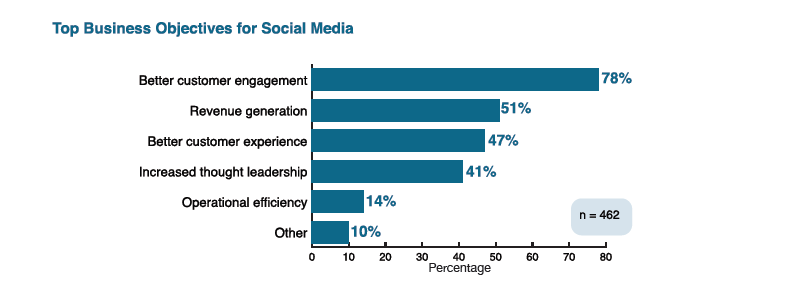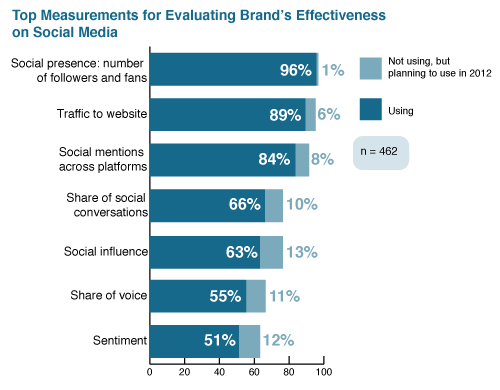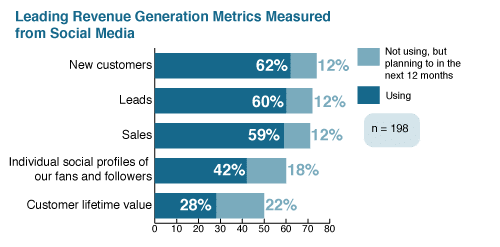
Last week, the good folks over at Social Media Breakfast Waterloo were kind enough to invite me over to speak to their members.
The topic was crowd-sourced, and the chosen talk was on how blogging could be used as part of your marketing strategy. Since the audience was made up of every business size, from solo entrepreneurs to SMB owners and C-suite executives, it was a great topic to be talking about.
You can view my presentation below, but i just wanted to highlight the four key points that you can take away for your own blog and marketing combination.
1. Research
One of the most important things you can do before you start a business blog is research whether your customers and audience actually want one. It’s all well and good saying, “Well, our competition has a blog – we should too!”. But that’s just setting yourself up for failure.
Look at your customer base; are they the kind that read blogs? Are they mobile-led (which would suggest a blog-friendly audience)? Are they computer-literate?
A slaughterhouse in Moldova is probably not going to need a blog; a hospitality industry business probably should have one. Ask your customers if they’d be interested in a blog – a questionnaire, an email, when they’re in your store, etc.
Having a ready audience will immediately increase your chances of having a decent corporate blog.
2. Strategy
Just as important as the research angle is the strategy one. If you launch a business blog and you don’t have defined goals with it, you’re just wasting valuable time and resources in maintaining it.
Will it be for lead generation? Will it be to promote your business’ thought leadership? Is it to handle service questions, or give the latest news on product or company updates? Is it to get to know your customers better and what makes them tick?
Have a solid strategy in place on what you want to achieve, and how you wish to achieve it. Then set timelines in place to measure how you’re doing, and adapt accordingly.
You wouldn’t go into business without a clear goal and plan – why would you do anything different with another angle of your business?
3. Consistency
If there’s one thing that blog readers hate, it’s inconsistency. This can be across multiple areas – publishing posts, comment systems (yes, I’m guilty of this one!), voice, editorial, writers and more.
And there’s a simple reason for this – there are currently between 180 and 200 million blogs out there, and reader interest is becoming shorter and shorter as publications vie for eyeballs. So if you’re confusing your reader with ever-changing positions on your blog, they’ll more often than not decide it’s not worth hanging around.
If you want to keep your readers and grow your blog, be consistent.
- If you’re going to post once a week, make it the same day and the same time of day. If you’re going to post 2-3 times a week, keep it the same days.
- If you’re going to be primarily a text blog, remain that way. If you’re going to be a video-led blog, be that blog. You can mix things up now and again, but keep the prime focus the one you set up yourself up as.
- Keep the tone consistent. if you’re going to be a serious blog, remain in a serious tone. If you’re looking to show the fun side of your business, highlight that with pictures and a lighter tone.
If you keep to the goals you set out with, and the way you set out reaching them, it’ll cause less confusion and encourage readers to stay with you.
4. Measurement
One of my biggest bugbears is when I speak with business owners and ask them about analytics and measurement, and how they’re tracking their success based on their goals, and they reply with a blank stare and an, “Uh….” soundbite.
If you’re not tracking your activity, how do you expect to know if you’re succeeding; where you’re succeeding; where you need to adapt and more?
The best of it is, you can track all this stuff for free (with the exception of cost of man hours to do so).
- Use Google Analytics or Woopra to track your web visits, as well as where the traffic is coming from, what your visitors are doing while on site, where they’re going afterwards, and much more. See which content works, which doesn’t, and amend your approach accordingly.
- Track social media success with tools like Jugnoo (I’m biased, but we do track pretty well!), Most Shared Posts, or social campaigns in your analytics solution(s). By knowing what content resonates, and where, you can be far more strategic on your approach to both your blog and that platform.
- If you’re selling products from your business blog, use something like WooCommerce and Improvely. This can identify the source of the purchase, the referral, the costs involved and much more.
You don’t have to run a bells and whistles measurement solution – but for the love of all things common sense, please do have at least some way to track what you’re doing!
As I mentioned, these are the four key areas for any business blog to really concentrate on and get right. There are more, which the presentation looks at. But as a starting point, they should be the ones you answer if you want your business blog to succeed.
The rest is up to you.













